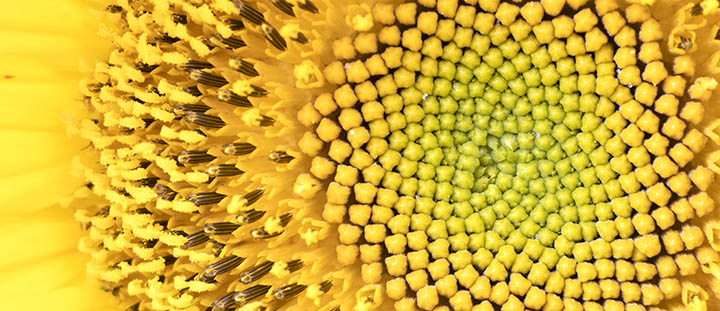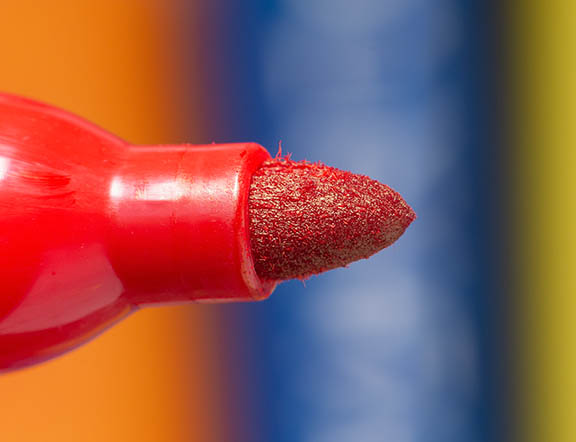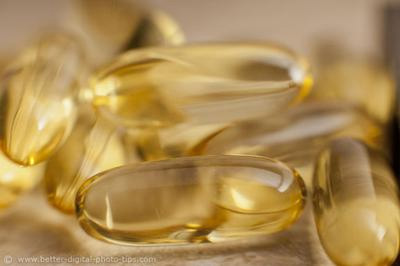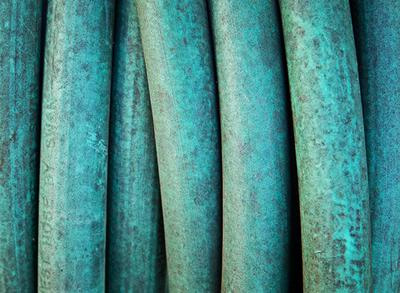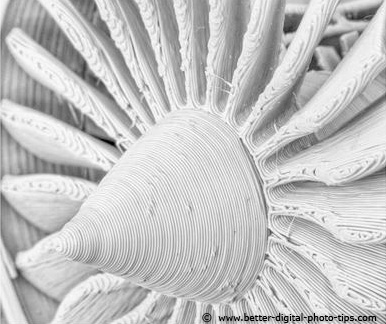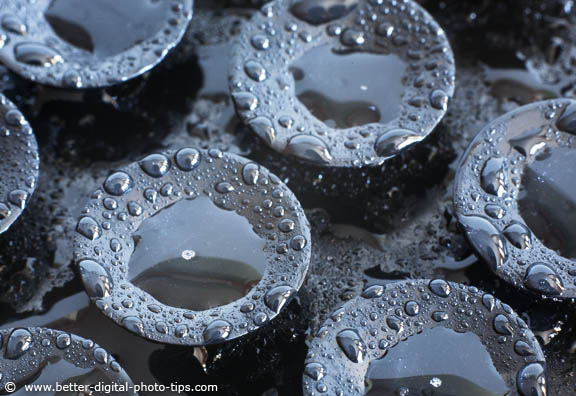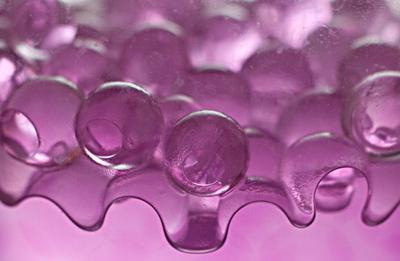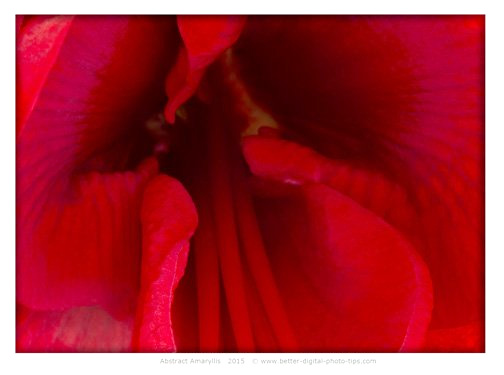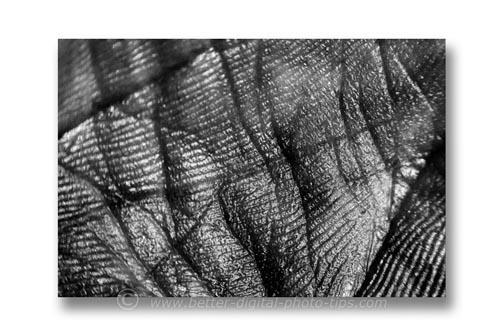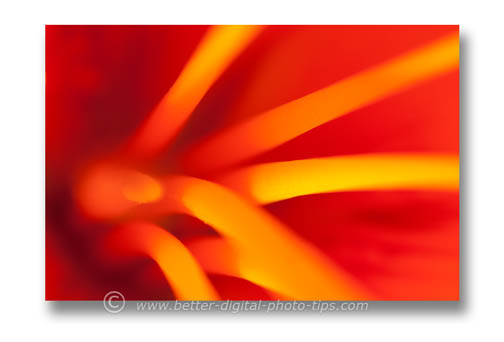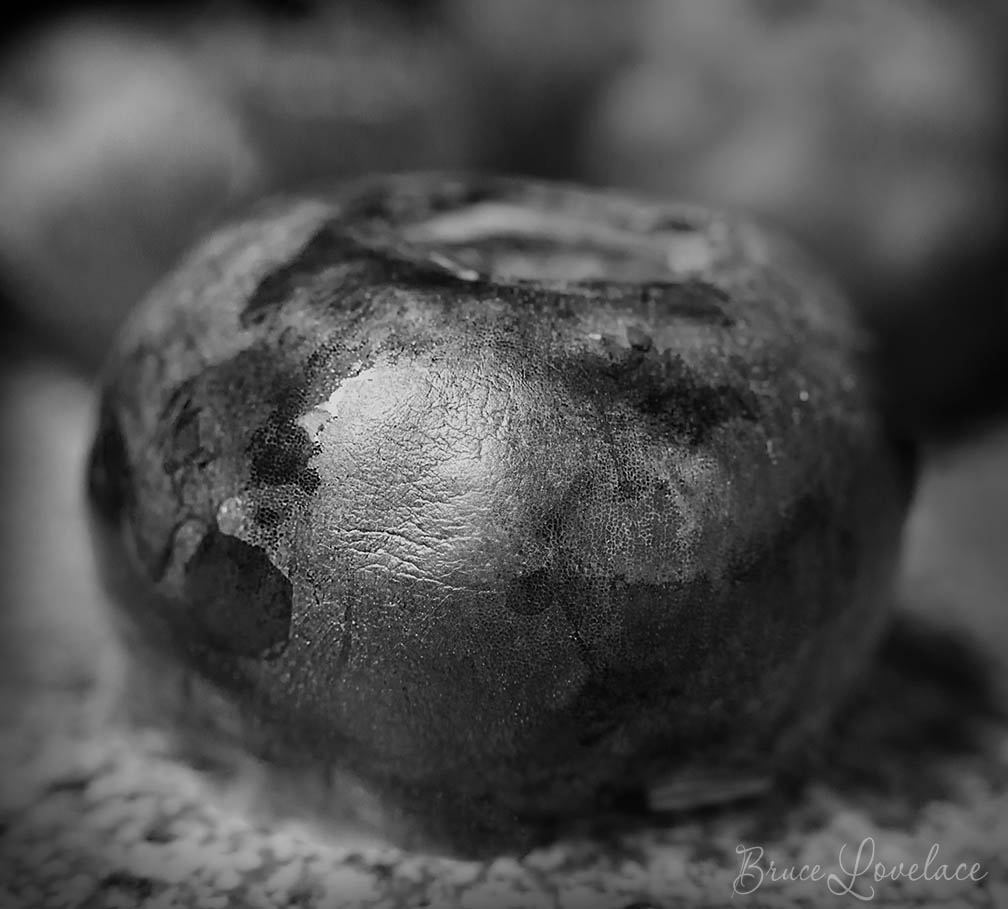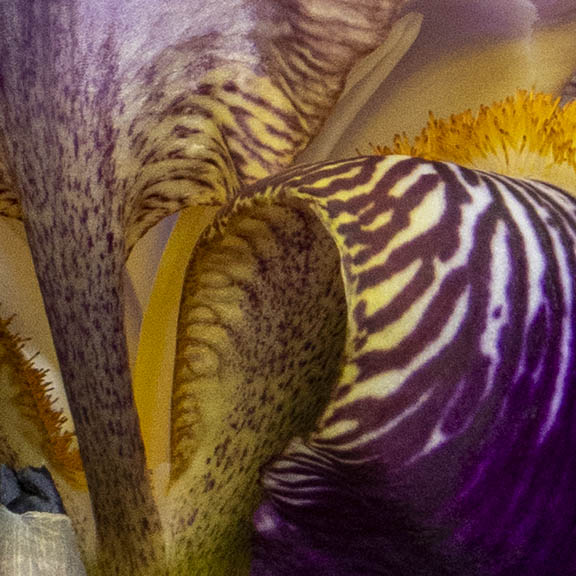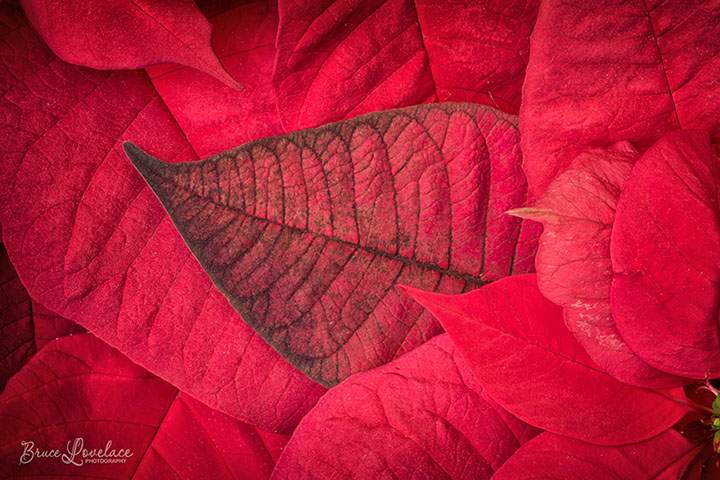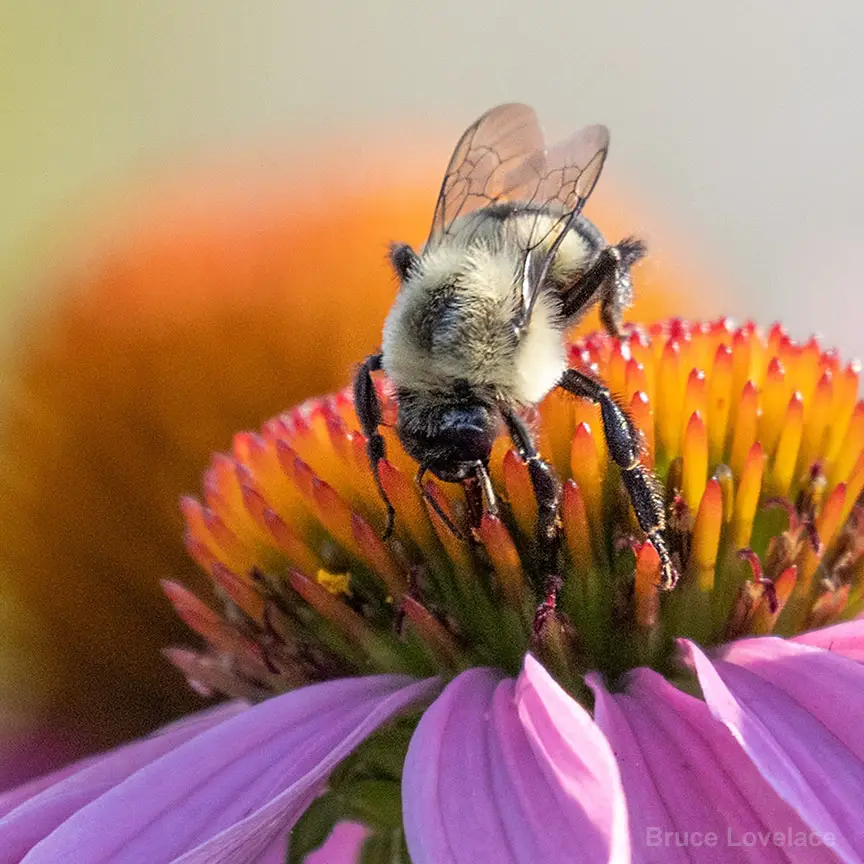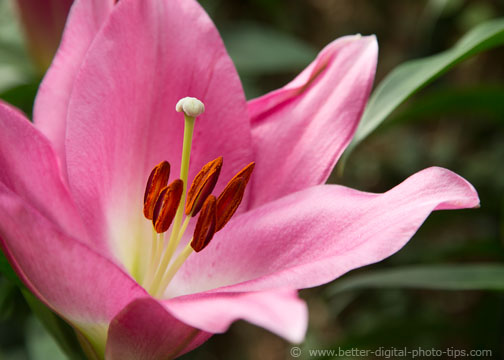HOW TO POSTS: LIGHTING AND COMPOSITION
abstract macro photography
creative close-up photos
This post will help you understand abstract macro photography.
It's a fascinating topic and the possibilities are only limited by your imagination. I've included a collection of abstract close-up photos to give you a smattering of ideas on what to photograph.
We'll start with the definition of what constitutes abstract macro photography.
what is abstract macro photography
definition OF ABSTRACT PHOTOGRAPHY
Abstract macro photography is using photographic equipment to create an image of a subject in a way that shows that subject as a non-literal, interpretive perception that is more about shape, color, and textures and hides the real identity of the subject.
To be successful abstract macro photographers still have to use good compositional tactics, know what camera settings to use, and use good lighting technique.
Here's a guest post on tips for abstract photography beginners.
"ALTHOUGH MANY EXAMPLES OF ABSTRACT MACRO PHOTOS ARE NOT FULLY ABSTRACT THAT SHOULDN'T DETER YOUR ENJOYMENT OF SHOOTING CLOSE-UP IMAGES - Bruce Lovelace
Here's a great example of a somewhat recognizable when seen in its normal environment, but getting into a macro perspective causes it to appear somewhat abstract.
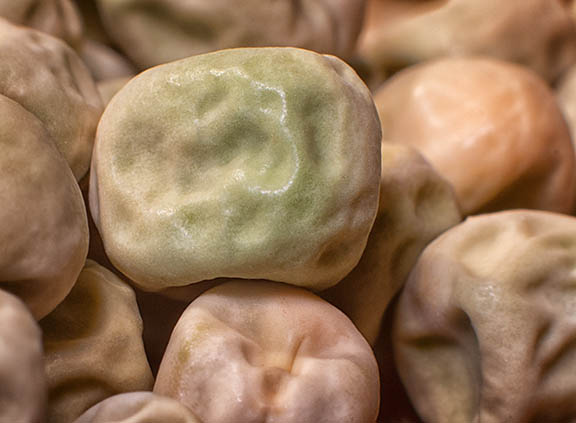 Is this abstract enough to cloud its identity?
Is this abstract enough to cloud its identity?You decide, but I had a blast shooting these photos for this post
Take a minute to study this close-up. If you have your own vegetable garden you may recognize its identity. To reveal what this subject is, Just highlight the space between the brackets: [ Snap Pea Seeds ].
5 great places to find abstract macro photography ideas
THIS WEBSITE. Here's a post on this website about coming up with some creative ideas for your macro subjects.
GOOGLE. Use Google Image Search. Google is my best friend when it comes to searching for photography topics. Use the image search from google to generate idea for subjects to photograph up close.
FLICKER, 500PIX, or SMUGMUG. If you're looking for some creative macro photography ideas you can do a search on one of the big online photo gallery sites too.
PEXELS. Free downloadable macro photos are available from several huge photography collection site, including Pexels.
PIXABAY. Thousands of free abstract macro images are available.
and more abstract photo ideas
Here are more ideas on how to find subjects for abstract macro images. These 5 examples of monotone subjects where the textures and patterns are the subject of the image. Look at what they are and ideas will come to you as you think about them. Pin your favorite abstract.
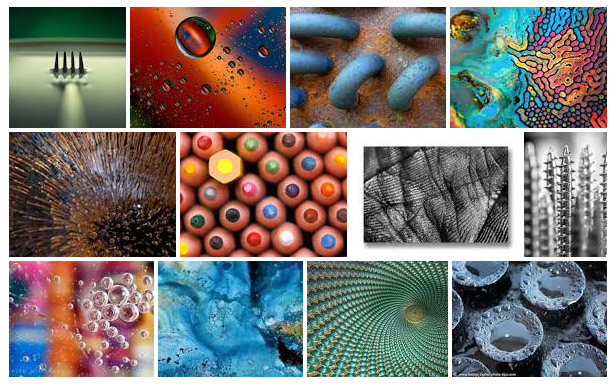 Google's results on search for "Abstract Macro Photography"
Google's results on search for "Abstract Macro Photography"Out of the 12 images that came up when I searched "abstract macro photography, two of them were already used in this article. Compositional elements become even more important when our minds don't immediately identify the subject as a recognizable object, so using good composition is a must when you get abstract.
Often with abstract macro photos, you can't even recognize what the actual subject matter is. Textures become a big part of the composition when you come in close and they are magnified. Can you guess what the subject is in the image below? Here's a hint. It's actually alive.
This black and white photo is an abstract close-up photo of my own palm. I converted it to a black and white image by using the Black and White Image-Adjustment in Photoshop.
Flowers are likely the most popular subject for shooting macro and it's easy for flowers to look abstract when you only photograph small parts of them.
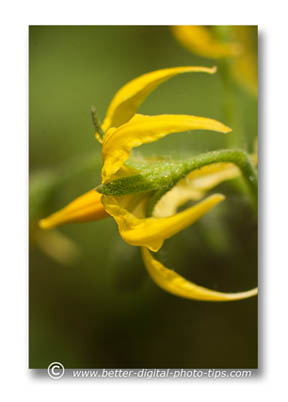 Blast Off!
Blast Off!This image of this tomato blossom reminds me of a photo of the space shuttle with it's wide-spread rocket trail during take-off.
All of these photos were taken with my 85mm "prime lens" and Opteka extension tubes.
This equipment combination gives me a nice working distance from my subject and great quality and a high level of magnification.
Most of my subject matter for extremely close-up photography has been the same as many other digital photographers: insects and flowers.
is ABSTRACT MACRO PHOTOGRAPHY ART
Would you consider the abstract photo above to be macro photography art? It's a macro photo of the inside of an orange Lily using a very shallow depth of field. Many feel that photography in and of itself is intrinsically art.
I am not so sure. Does a quick unplanned snapshot, without any thought of composition, color, lighting or subject matter qualify as art? Perhaps the expression: One man's trash is another man's treasure is a saying that can apply to one's interpretation of what art is.
The definition given by Wikipedia is: "Art is the product or process of deliberately arranging items (often with symbolic significance) in a way that influences and affects one or more of the senses, emotions, and intellect." All of the photos in this section of this post make use of bright colors. In my mind, they have artistic qualities.
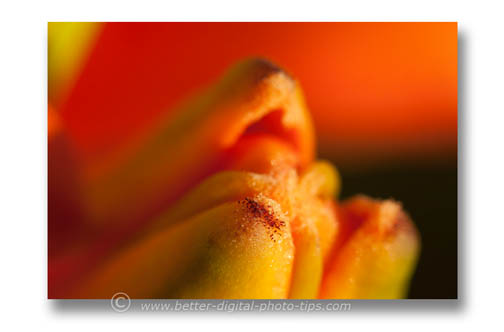 ABSTRACT LILY - #2
ABSTRACT LILY - #2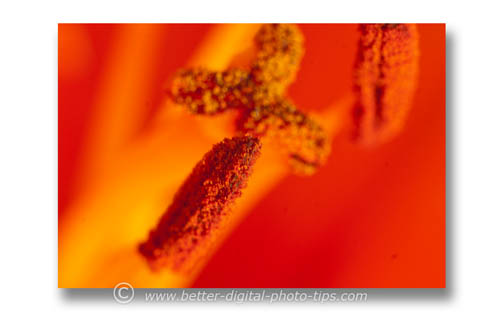 ABSTRACT LILY - #3
ABSTRACT LILY - #3These three "ABSTRACT LILY" photographs were taken within a 15 minute span. All of them were taken of the same flowering Lily plant. When you are working at macro distances, often a slight change in direction of shooting will give you a completely different photo.
ABSTRACT LILY - #3 above is actually a bit over-exposed according to the color histogram in Photoshop's raw image converter. I like the surreal, vibrant look of the photo, so I did very little adjustment of the resulting photo from the camera's settings. The composition is a bit non-traditional which is something I don't do often enough.
I don't consider myself artistically talented at all, although I feel I can occasionally get creative images using macro photography as a tool. These photos could all be called abstract macro photography art.
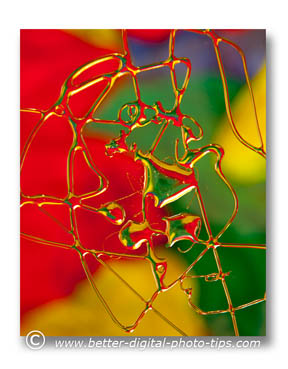 Parachute background
Parachute backgroundThe abstract photo to the right isn't a true macro, but I included it in the article because we can still learn by looking at our photos failures and adjusting our approach.
I don't particularly like the resulting photo I made, but I had a lot of creative, childlike fun taking it. I got the idea from someone's blog on macro photography. Can you guess how I created it?
The answer is below, but I encourage you to analyze the photo first and use a few hints I give you. Let's have a little fun with this. It is a close-up. The zoom lens has macro focusing, but really wasn't at a macro focusing distance.
I may recreate this effect again, but next time with using extension tubes or a dedicated macro lens. Here's how I made this photo. I dripped a thick liquid onto a sheet of glass. The liquid was actually Karo syrup dripped onto a 11x14 inch pane of glass that was clipped to the edge of my work bench.
The colors were from a colorful children's play parachute that was placed a few feet away on the floor, underneath the drippings on the glass.
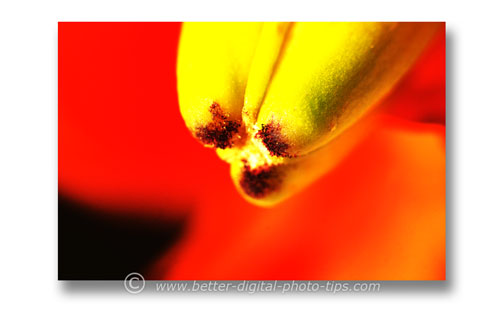 ABSTRACT LILY - #4
ABSTRACT LILY - #4The final example of photography art is an image using the same original flowering Lily plant.
With this one, I used Adjustment Curves in Photoshop to make it abstract. If you resort to software manipulations of your photography after you capture them in camera, the possibilities are literally infinite.
abstract macro photos submitted by visitors of this site
1. ABSTRACT RED ROSE
I used a posterize adjustment layer in Photoshop and created this abstract from a macro photo of a red rose. I liked it better as a square composition and the center of the rose off-center.
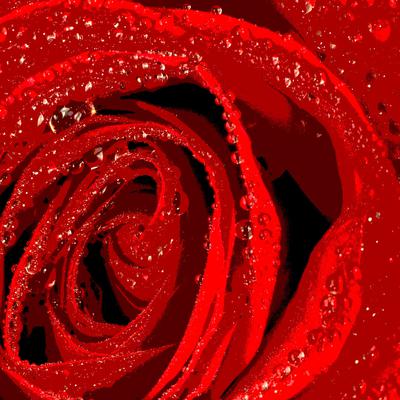 Red Rose Abstract
Red Rose AbstractIt has a bit more contrast than the original photo but I like the dark elliptical areas that are created by the curved petals of the rose.
2. ABSTRACT MACRO PHOTOGRAPHY OF NATURE
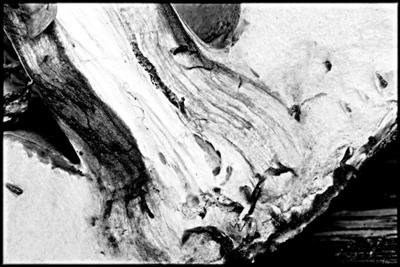 Ugly Abstractus Fungi
Ugly Abstractus FungiConverted to Black and White
I found a large mushroom in my front yard and tried to create a few still life photos with the mushroom on a wooden cutting board. I cut the mushroom in half and found some cool patterns in the stem. I converted into black and white in Photoshop, sharpened it a little, then added a black border around the photo.
how to shoot abstract macro photos
Here are 5 tips on how to shoot abstract macro photos.
- WHAT. Start with determining what you're going to photograph. Of course, choosing the subject matter is the most important part. We covered that earlier in this post.
- WHERE. Any small table or sturdy surface will do. Most of my macro shots are done close to a window so that I can take advantage of the existing nature light. Choose a place and an angle of view with no distracting background elements behind your subject. This is very important.
- LIGHTING. Plan your lighting base on what you have available. If you're using window light. have a large white reflector to fill in the shadows if need. Using a flash? Then bounce it off of a wall, the ceiling, or a white reflector.
- SET-UP. Position your subject and staged background in place before you even bring your camera into position.
- CAMERA. Mount your camera to a sturdy tripod, adjust the height to give you the right angle. Set on aperture priority to control the amount of depth of field you want.
How to shoot better macro photography
Just like all of the other kinds of photography, in order to shoot great macro photos, you need decent macro equipment, an interesting subject, good lighting, and employ solid elements of compositional techniques.
Good composition is paying attention to overall shape and balance, textures, patterns, shadows, directional lines, and color.
It's also very helpful to improve your own macro photos by studying the work of other macro shooters. Here is a post I wrote on talented and famous macro photographers.
How to MAKE macro more abstract
The easiest way to make a macro image into an abstract macro photo is to convert it to black and white. Eliminating the color from an image alters iit away from an accurate representation more into an interpretation of that.
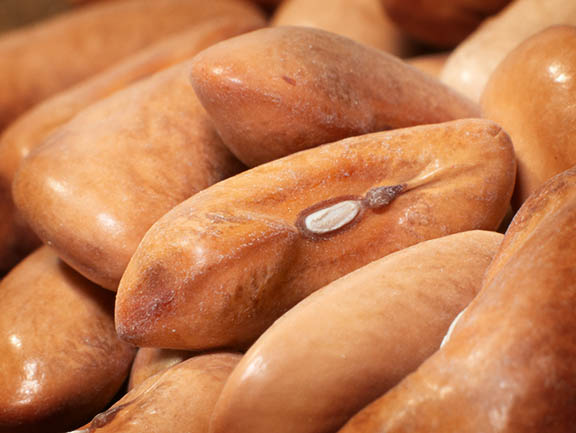 Color Macro
Color Macro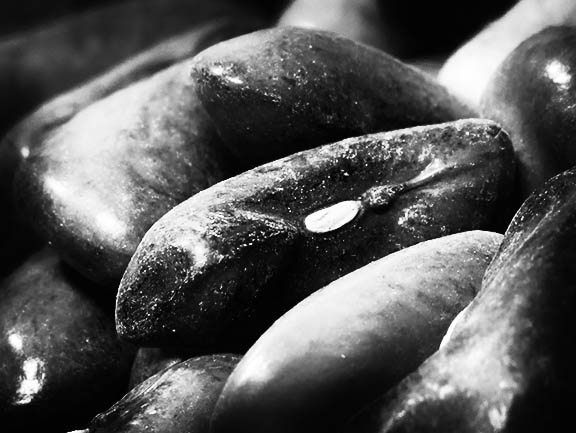 Black and White Abstract
Black and White AbstractThere are a number of ways to achieve this type of black and white abstraction which go beyond the scope of this article, but realize it's a method you can utilize to achieve a variety. More on abstract black and white.
WHAT Equipment Do you need to do abstract macro photography
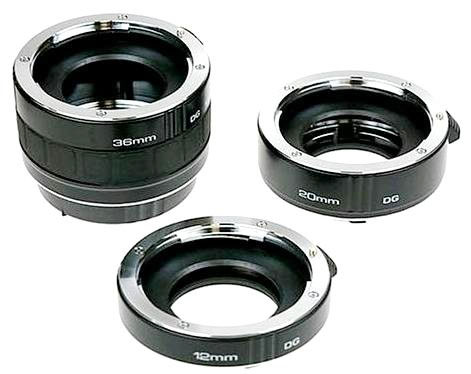
1. MACRO LENS.
Just about any camera will do, but the lens you choose matters quite a bit. Longer macro lenses 100mm and longer give you a bigger working distance between you and your subject. As crazy as it sounds, I don't use a macro lens. I like extension tubes instead.
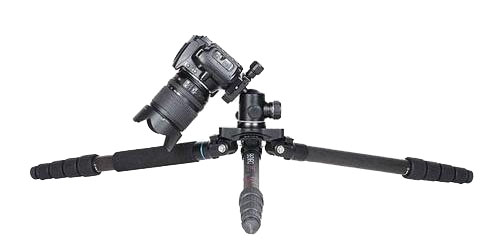
2. VERSATILE TRIPOD. Macro photography demands the use of a sturdy tripod more than any other type of photography except perhaps nighttime photography. You have limited depth of field, small compositional adjustments, and often very slow shutter speeds to deal with. A good tripod will help you get sharp images.
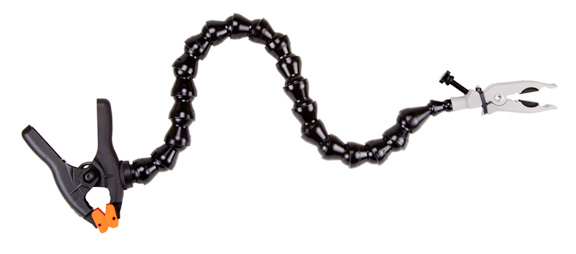
3. MACRO ACCESSORIES. My number 1 macro photography accessory is an 8x10 inch piece of white cardboard, but you can use anything similar is size and color. Working with such a small subject makes controlling the like so much easier.
My second favorite accessory for shooting close-ups is my Wimberley Plamp II. It will hold a reflector, a light blocker, a pen light, or often your subject. I used my Wimberley Plamp to take the photo of the red maker at the beginning of this post.
Keep shooting, keep learning, keep improving.


ABOUT BRUCE LOVELACE
Bruce is the publisher of this website. He is the author of the book "Improve Your Photography Instantly." Read more on Bruce on his Bio Page. He's been known as The Traveling Photographer ever since 1994. Read more about this website.
View some of Bruce's photos on Instagram. Visit the Facebook Page. Watch him on YouTube. Bruce runs photo workshops for kids and adults, and provides one-on-one photography coaching.
Digital Photography Education Location on Google My Business
Artistic Macro Photos. Create macro photography art. Sample artistic photos. Once you've viewed a bunch of images you can come up with a list of macro photography projects to do.
Back to Macro Photography. This is the hub of macro photography posts on this website.
